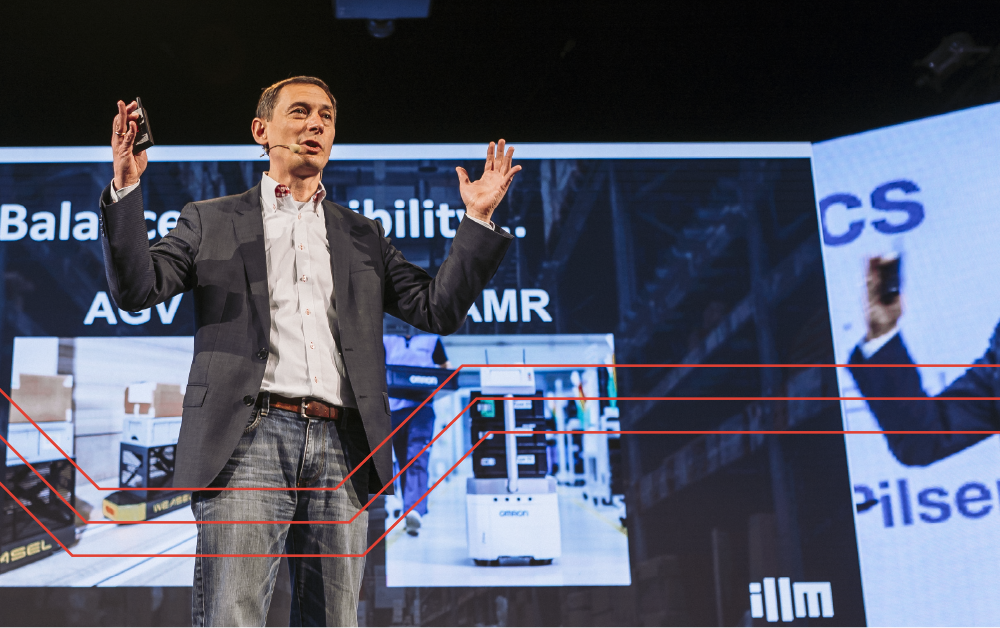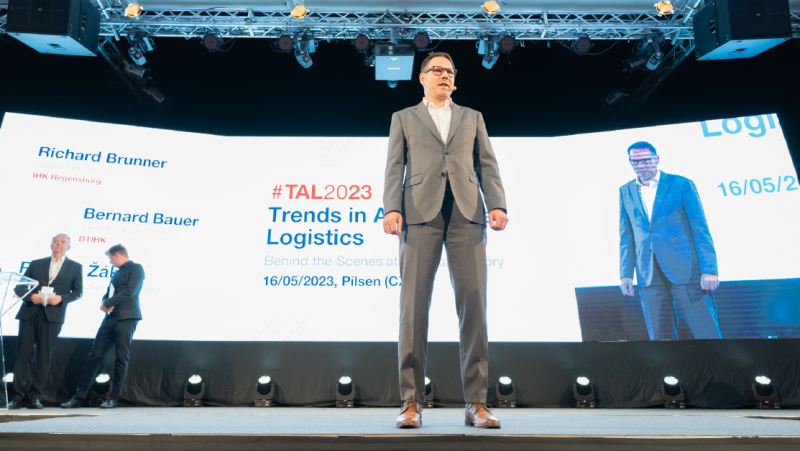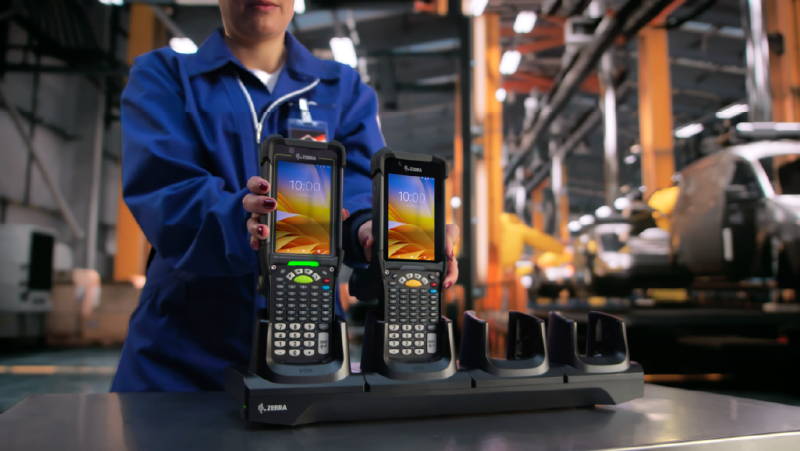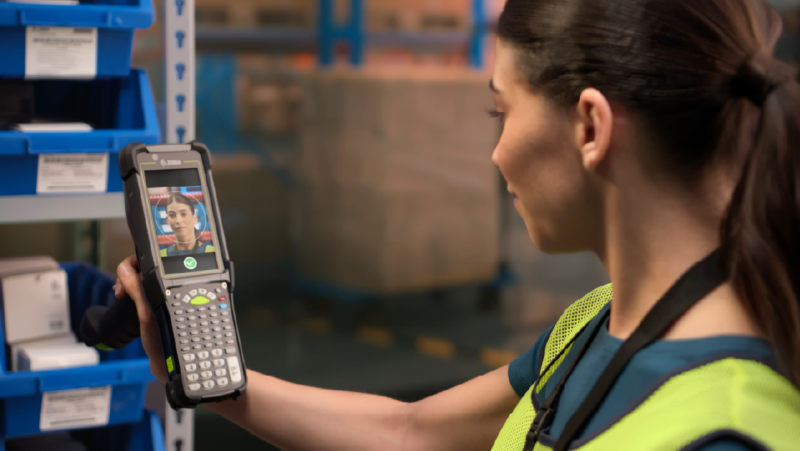The right balance in logistics and where to find it
- Trends
- Article
The most modern approaches in logistics—why should you be aware of the latest trends? How to find the right balance in logistics and keep it? At the Trends in Automotive Logistics Conference (TAL) 2021, which took place in Pilsen, Marco Prüglmeier talked about different approaches to robotization in logistics, showed the most revolutionary technological innovations, and mentioned some cons of automatization. We sum up the most interesting facts from Marco’s speech in this article.
Why even seek balance in logistics?
Technological development is advancing tremendously fast. You need to be aware of the latest trends; if you don’t stay in the loop, your competitors might outgrow you remarkably and you might never catch up. In the Oxford English dictionary, the word “balance” is defined as the “ability to keep steady,” and that’s exactly what you should strive to do—keep steady, on your feet, in your business, and ideally, as a leader in your area of expertise.
It’s all about flexibility
Marco showed the newest robotic mechanisms that amused the audience with their almost superhuman-like abilities. We saw robots doing backflips or skillfully running a parkour course. Most companies don’t need backflipping robots in their warehouses; however, this example accurately illustrates how flexible robotical mechanisms are getting, and how adaptable they can be.
Robots smoothly step over cables on the floor without getting tangled in them. Robots naturally pass by their human colleagues without bumping into them. Robots independently recalculate their route in case an obstacle appears in their way. All these robots already exist and are able to work with humans side by side. There’s even no need to adapt the workspace for them. Marco Prüglmeier predicts that fully autonomous robots (AMRs = autonomous mobile robots) will soon prevail in modern logistics operations and will fully replace so-called AGVs (automated guided vehicles). The difference between these two types of robots can be best explained by this example: If there’s an obstacle in front of them, an AGV simply halts in front of it, while an AMR pauses, recalculates its route, and then resumes its new path, expertly avoiding the obstacle.
Robot to human vs. robot to robot
Human and robotic work used to be strictly separated—this is no longer the case. On the contrary, the current trend is to increase human to robot interactions in the workspace. According to Marco, the amount of human to robot cooperation increases yearly by approx. 40%. Predictions for the future are that more and more inner logistics operations will be based on machine to machine interactions.
Want to see clips resembling a futuristic film? Have a look at Marco Prüglmeier’s entire speech here:
Truck driver on home office
Motorests by freeways slowly decaying—not likely any time soon. While automation and robotization are rapidly advancing in companies’ inner spaces, there are so many variables in the outside world (e.g., unpredictable weather) that progress here is much less dramatic. But that doesn’t mean it’s non-existent.
Marco mentions a French AMR robot (Gaussin) that can autonomously attach a trailer of a truck to itself and drive it to its designated spot. The same thing can be done semi-autonomously, FERNRIDE, a startup in Munich has come up with a solution thanks to which trailers seemingly drive themselves in the trailer yard, while the drivers sit comfortably at their desks in the main building. This is what we would call the perfect balance between human and machine.
Augmented vs. virtual reality
For instance, augmented reality (AG) glasses—Marco considers them to be the next big hit for warehouse workers. These glasses immediately tell you, on which shelf and at what spot are the goods you need. More wearables are to become a standard in logistics—like scanning bracelets that keep both hands always free (NIMMSTA).
According to Marco, virtual reality (VR) can help with planning in logistics. However, Marco would focus on augmented reality for shop floor improvement and leave virtual reality to the entertainment business—for now.
Let’s automate in areas in which we’d want humans to act like robots and employ humans where they’re indispensable.
Infrastructure and sustainability
When a package for a customer is autonomously prepared, packed, and sent out by a robot, why couldn’t robots also deliver it? Marco predicts that automated delivery will change the entire urbanistic infrastructure. In Hamburg, the City Council has already approved the first stage of building an underground tunnel from the outskirts of the city to the city centre so that underground robotic trains will be able to independently deliver packages to selected destinations.
This is where modernization in logistics can positively affect environment and sustainability as it means less emissions.
Artificial intelligence
You have to mention AI when speaking about robotization and automation. Marco showed us a website that can generate an absolutely convincing human faces—nevertheless, such a human doesn’t exist and has never existed. The website works on the basis of advanced neural networks, so called GANs (Generative Adverserial Networks), working together—one net designs the face, the other evaluates its credibility. The human eye is not able to tell that this face is purely artificial.
This innovation is definitely more likely to be used in the entertainment industry than in logistics. However, it’s good to be aware of it.
Why stay in the loop?
Are you running a company that can benefit from automation of its shopfloor logistics? Let yourself be intrigued by the latest trends. Logistics operations have been run by IT departments since the 70s, and there’s no sign that this should ever change. Quite the contrary: automation and robotization of inner logistics is inevitable in case you want to stay relevant. That’s why you need to know the latest trends, even if they’re not usable yet. That’s why you need to know how they work so that you’re prepared for the time they’ll become usable. Nobody can afford to implement the latest trends among the last ones! That train could be missed forever.
As Marco says at the end of his speech—let humans do the human part of their jobs, let them shine in areas in which they are irreplaceable. Robots can serve meals to patients in hospitals, giving the human staff more time they need to really tend to their patients individually. Translated into logistics—let’s automate in areas in which we’d want humans to act like robots and employ humans where they’re indispensable. Nobody wants to hire 200 forklift drivers just to make them redundant in two years’ time.

Who is Marco Prüglmeier?
Marco has more than 20 years of work experience in the management of BMW Group that he now uses in his own company i2market. He is a consultant on implementing the latest technological innovations and also co-founded NOYES TECHNOLOGIES, a robotics startup for urban fulfillment.
Share article
Top stories from logistics, production and IT.
Subscribe to Aimtec Insights
By registering, you agree to the processing of your personal data by Aimtec as described in the Privacy policy.
Get top stories and articles
from Logistics, Production and IT.
Subscribe to Aimtec Insights
By registering, you agree to the processing of your personal data by Aimtec as described in the Privacy policy.







